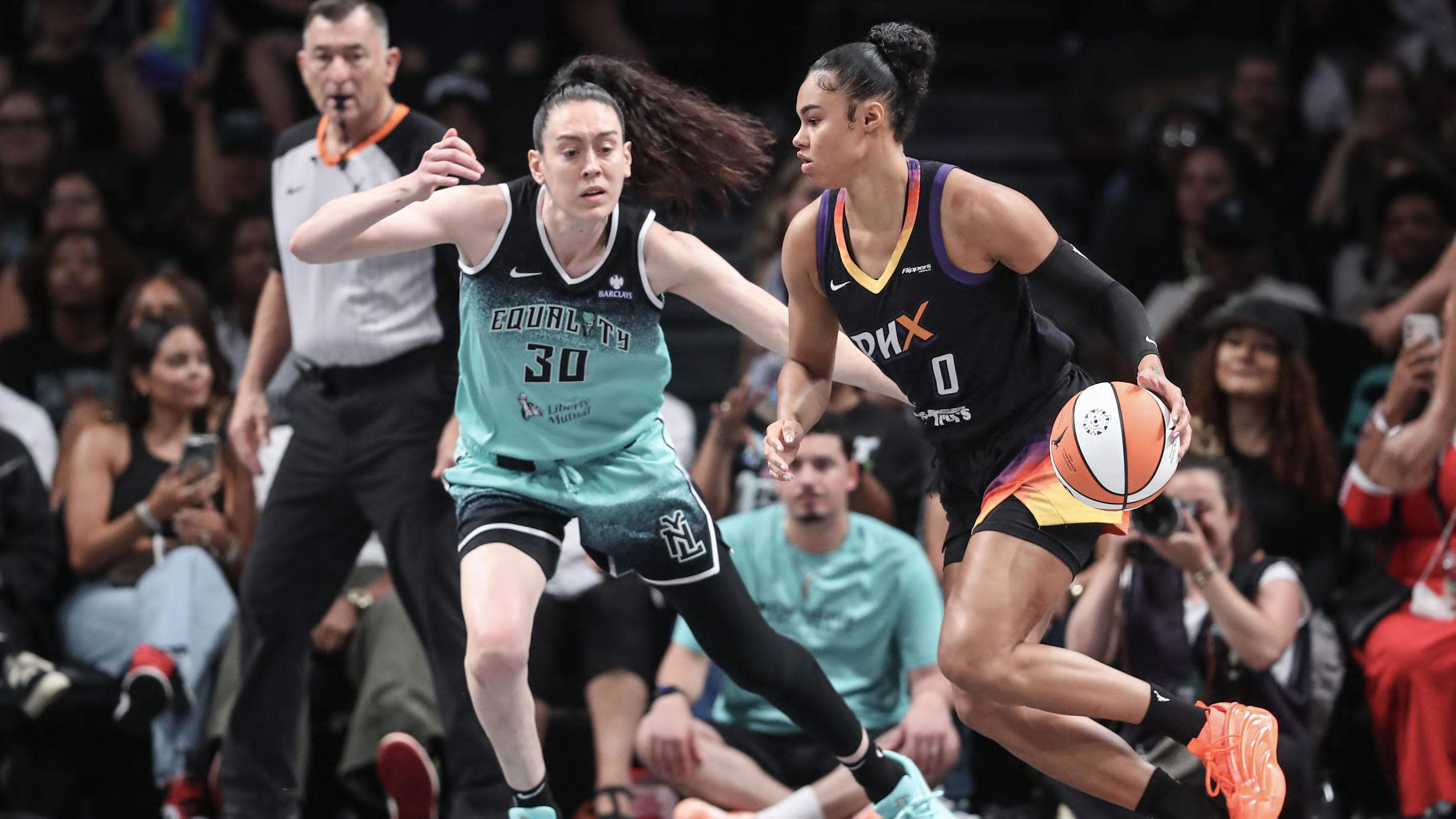What to Know About Liberty Star's Injury

Starting lineup has taken on a dire definition for the New York Liberty these days: it could refer to either the group that starts games or it could well refer to the team's expansive injury report released the day before tip-off.
The Liberty (20-11) still rank second on the WNBA leaderboard but have hit a few roadblocks thanks to the injury bug biting several major contributors.
Isabelle Harrison (concussion) joined fellow depth stars Kennedy Burke (calf, available on an emergency basis) and Nyara Sabally (knee) on the list for Tuesday's game against the Los Angeles Sparks (10 p.m.
ET, My9/NBA TV) while the list is headlined by All-Star Breanna Stewart.
Stewart, the seven-time All-Star , has been missing from action since leaving the prior tilt against the Sparks on July 26 with a lower body injury that was later diagnosed as a bone bruise on her knee.
The forward spoke for the first time since her departure prior to Sunday's Liberty game against the Minnesota Lynx and expressed a "non-negotiable" desire to return by her birthday on Aug.
27.
"I feel great.
It's really just kind of giving my my leg, the bones, a little bit of time while we have it, but hoping to be back sooner [rather] than later," a spirited Stewart said , mentioning that the next phase of her rehab is focus on "cardio" and getting up to game speed.
"I want to be out there helping them and fighting and battling with them, that's the hardest part.
But they got my back, and while we're going to go through some struggles, or we went through some, it's really about being able to bounce back, and they want me to be back to helping too.
[But] they don't want me to rush me either." With Stewart still out for Tuesday's gameand presumably the other six left before she turns 31Liberty on SI spoke to Dr.
Robert A.
Christian about the situation.
While Dr.
Christian, an orthopedic sports medicine surgeon stationed New York Presbyterian/Columbia University Irving Medical Center and Westchester, could not speak about Stewart's personal injury, he did speak about lower body bone bruises and what could be faced on the road ahead.
Dr.
Christian: Bone bruises in the lower body can happen from a number of different ways.
First and foremost, they can happen, and I would say this is the most common, come from a direct collision.
On an MRI, the surrounding swelling from the injury would get into the bone.
That is mostly a pain-related issue, assuming there are no associated fractures or anything like that.
So it's really a question of how fast the athletic training staff is able to help the athlete recover and to tolerate a return to practice and training, games, etc.
Contusions and bruising can happen secondary to other injuries too.
But without having more information, it's hard to sort of delineate those two.
Dr.
Christian: Traditionally speaking, we talk about bone healing being a six-to-eight week process as the bone remodels, heals, and recovers from the inciting inflammation and injury.
The overall injury may take less than that, or longer than that, depending on how a particular athlete recovers.
I've certainly seen athletes come back sooner, and also have athletes have their symptoms when you're making it harder for them to return.
Dr.
Christian: It's mostly about the depth of the injury.
A subcutaneous or intramuscular bruise are more of the bruises you traditionally think about.
You get hit on the side of the leg, develop an injury to the skin, soft tissues, and muscle on the way down.
A bone bruise would be that much harder, from a collision or contusion.
From an MRI perspective, there would be increased edema (buildup of fluid in the tissue) and swelling, potentially inside the bone as well.
The nature of the contact, the energy of the contact, and the injury getting that deep is what obviously rises to the level of something that would involve the bone and then part of what extends the recovery process accordingly.
Dr.
Christian: The biggest risk of returning too early from any injury is re-injury and that can be not so much getting a new bone bruise, because that would only happen with repeat contact (to the same area), but it's really like a re-aggravation of symptoms.
If somebody is very uncomfortable with a garden variety bruise, if you go back too early, you may aggravate those symptoms before the healing process is far enough along that you don't have the same risk of re-injury.
I think the quandary that we all face as sports medicine physicians and team doctors is really one of if you let somebody come back from one injury too soon, you put them at risk for further injuries, whether it's not only just protecting the original injury, but can they protect themselves from the next collision or the next event.
Make sure you bookmark Liberty on SI for the latest news, exclusive interviews, film breakdowns and so much more!.
This article has been shared from the original article on si, here is the link to the original article.
